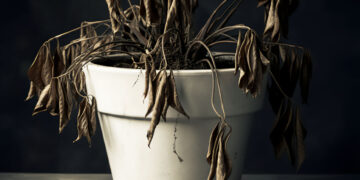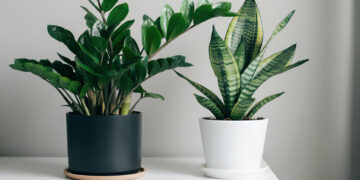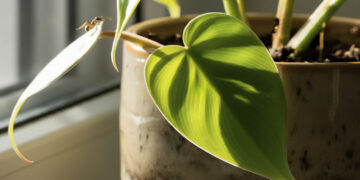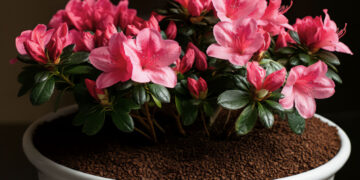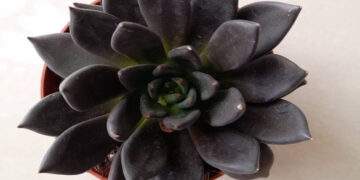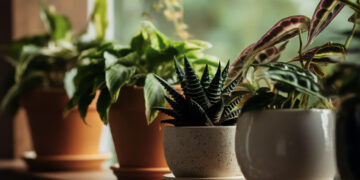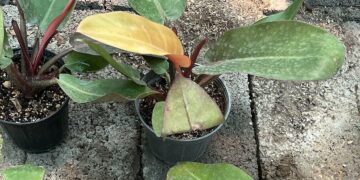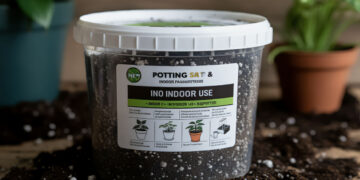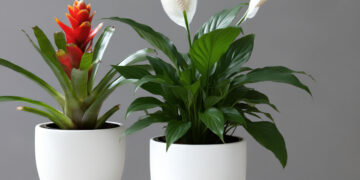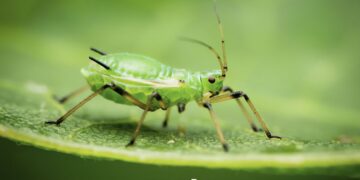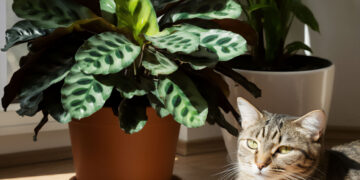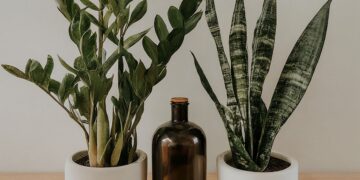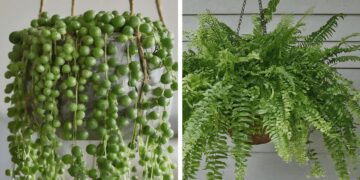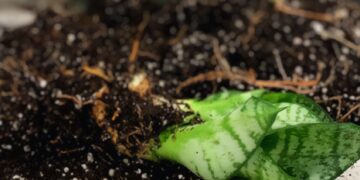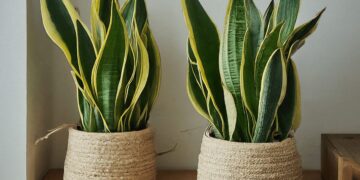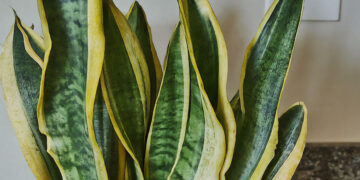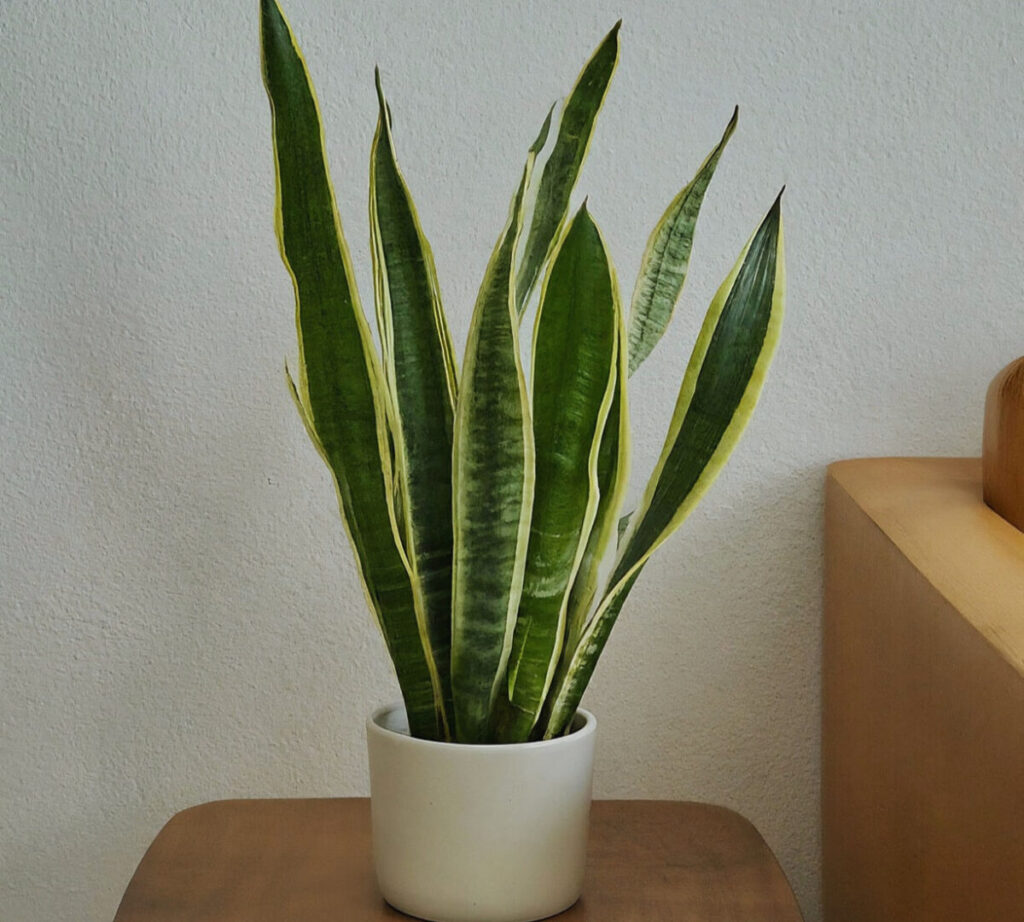
Snake plant, which is also known by names like Sansevieria and mother-in-law’s tongue, comes originally from West Africa. If I want to mention the benefits of the snake plant, I’d better say that It is a hardy succulent that makes the house look modern and beautiful.
Now I want to share my own experience as some handful tips to have a green, tall and healthy Snake plant.
A brief overview of the Snake plant caring
Most types of snake plants require the same basic care. Just put them in a bright place with indirect light and a temperature between 65-85°F (20-30°C), give them soil that has good drainage, water them when dry out, and fertilize them during the growing season. Remember to prune regularly to keep them healthy.
However, there are some minor changes that should not be forgotten. For example, Sansevieria cylindrica, because of its thicker leaves, can endure more in direct light. Or if your plant has bigger and wider leaves, it’s normal to need more water than usual.
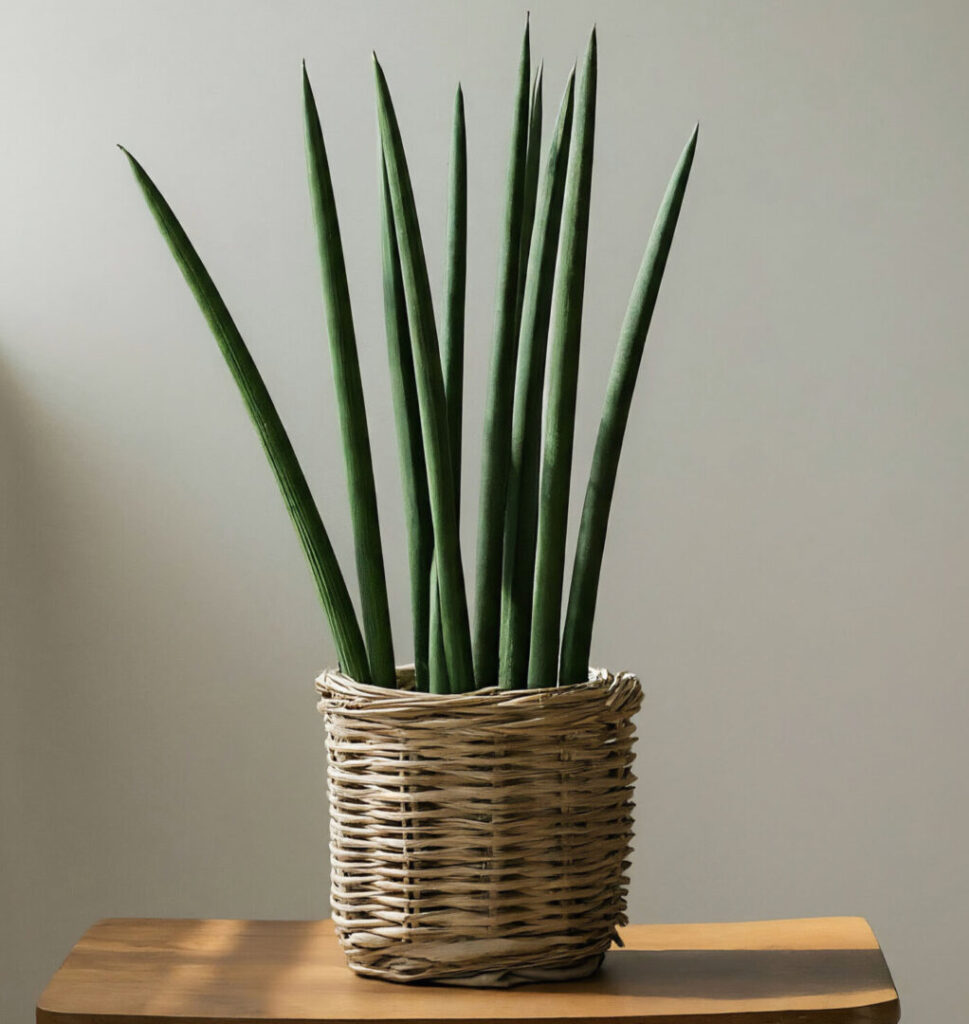
Comprehensive Care for Snake Plants
It is rare to see Snake plant flower, but if you do all these things that I say, maybe it will be encouraged to bloom and you can see its greenish-white flowers.
Perfect watering
Overwatering is something that is always dangerous for Snake plants. I always put my finger in the soil about one to two inches and water my snake plant if I feel it is dry. You must allow the plant soil to dry between two waterings. Seasonal care is necessary. So, Depending on the weather, I water once every 2-4 weeks in spring and summer and every 4-6 weeks in autumn and winter. Consider that because of their succulent nature, snake plants need less watering compared to many other houseplants.
Light Requirements
In the matter of lighting, Snake Plants are tough to beat. Although, they prefer bright places with indirect light, they are alright in low light. With natural light, they will grow well. Do not put them in direct light because their leaves will burn.
Ideal Temperature and Humidity
About temperature, I must say that mother-in-laws tongues cannot stand being in temperatures below 50°F (10°C) and they are well balanced from 65-85°F (20-30°C). When it comes to humidity, it can be said that snake plants are satisfied and suitable to low humidity. You just need to create stable conditions for them far away from the drafts or vents.
Best Soil for Snake Plants
For snake plants, use a cactus or succulent potting mix or add sand or perlite to the pot’s regular soil, this way the drainage and aeration of the plant will be ok, water will not gather together in the soil and snake plant root rot won’t happen.
Proper Fertilization
The fertilization time starts with the beginning spring and finishes with summer. It is better to give a balanced, water-soluble houseplant fertilizer diluted to half strength to snake plants once a month. Be careful, never fertilize the plant in the fall and winter when the plant’s growth slows down and also heavy food increases the soil salt and damages the roots.
Regular pruning snake plants
The only way to keep the tidy shape and health of snake plants and encourage them to grow more, is prune Snake plant. So, use a clean and sharp knife or scissors to cut down the yellow and dead leaves from the base.
Snake plant propagation ways
Snake plant cuttings are important. I suggest two methods. The first and simplest method of division is that you divide the plant at the root level and gently place each part in its own container with fresh soil. The second method is leaf cuttings. Choose a healthy leaf, divide it into 3 inches pieces, let it dry and firm a couple of days and plant it in moist soil with high drainage. After a few weeks, you will see that a new root has grown.
Tip: Keep in mind that caring for a snake plant outside is somewhat different from caring for it indoors.
Most common snake plants problems and how to deal

Although Snake plants are ideal for who always forget to take care of them, there are always some possible problems that I will tell you here and guide you how to get rid of them.
Root Rot
If the snake plant leaves turn yellow and the roots are dirty and mushy and give off an unpleasant smell, the roots must be rotten, which is due to overwatering or poorly draining soil.
What should I do? Don’t worry, change the snake plant pot, cut off the damaged part and plant the healthy part in the right soil.
Leaf Spot
If you see black and brown spots on the snake plant leaves with a yellow halo around them, your snake plant has a leaf spot, which is usually caused by too much watering and lack of movement of air around the snake plant.
What should I do? It’s time to remove the damaged leaf and perform general care, and maybe need treat it with fungicide.
Yellowing Leaves
If you see that the leaves of the snake plant are turning yellow, it must be watered too much, it does not get enough light, or it lacks nutrients.
What should I do? Control the soil moisture and Snake plant light needs in the way I explained above, place the snake plant in a bright, indirect sunlight and give it a balanced, diluted fertilizer in the growing season.
Drooping or Curling Leaves
The Snake Plant leaves curly goes directly back to how to water of the Snake plant. When a Snake plant experience water stress, I mean overwatered Snake plant, or on the contrary, underwatered snake plant get curled or droopy.
What should I do? Before watering snake plants, make sure that the soil is dry and then make sure that the soil is evenly moist but not wet.
Slow Growth
If a long time has passed and you think your Sansevieria has not grown enough, then you must have paid less attention to its light, soil and nutrients.
What should I do? Adjust the light, check the soil again to make sure it is suitable and give the plant the right nutrients. It may be unusual, but it is not bad to mix the milk with water in a ratio of 1 to 4 and apply it on the soil once a month. Milk has vitamins and calcium and acts like a natural fertilizer. Another way that I tried to improve the Snake plant soil is mixing coffee grounds slowly into the topsoil. Coffee grounds are helpful and increase the nitrogen level of soil and gain Snake plant growth rate.
Pest infestations
This evergreen plant is rarely attacked by three pests that cause holes in the snake plants and can be easily identified by watching out the leaves. The first is Spider Mites that eat the sap of the roots and make the leaves dusty with yellow spots. If you see small, white, cotton-like masses on the leaves and stems, unfortunately the snake plant has been attacked by Mealybugs and Thrips also create silver and bronze streaks on the leaves.
What should I do? First, remove the damaged parts, remove pests with a cotton swab dipped in rubbing alcohol and spray insecticidal soap or a mix of water and neem oil on the plant every a few days until the pests are gone.

Braided Snake plant
You may have seen that some people braid their Sansevieria, maybe it looks amazing, but it has a high risk and you must be careful not to damage the snake plant, because it limits plant growth and causes plant stress.
What should I do? Loosen the braids and regularly check the health of the plant so that the plant does not get weak or damaged.

sources:
https://site.extension.uga.edu
Do you have any questions or experiences to share that could help me and other readers? Please comment below. Your insights are invaluable.
